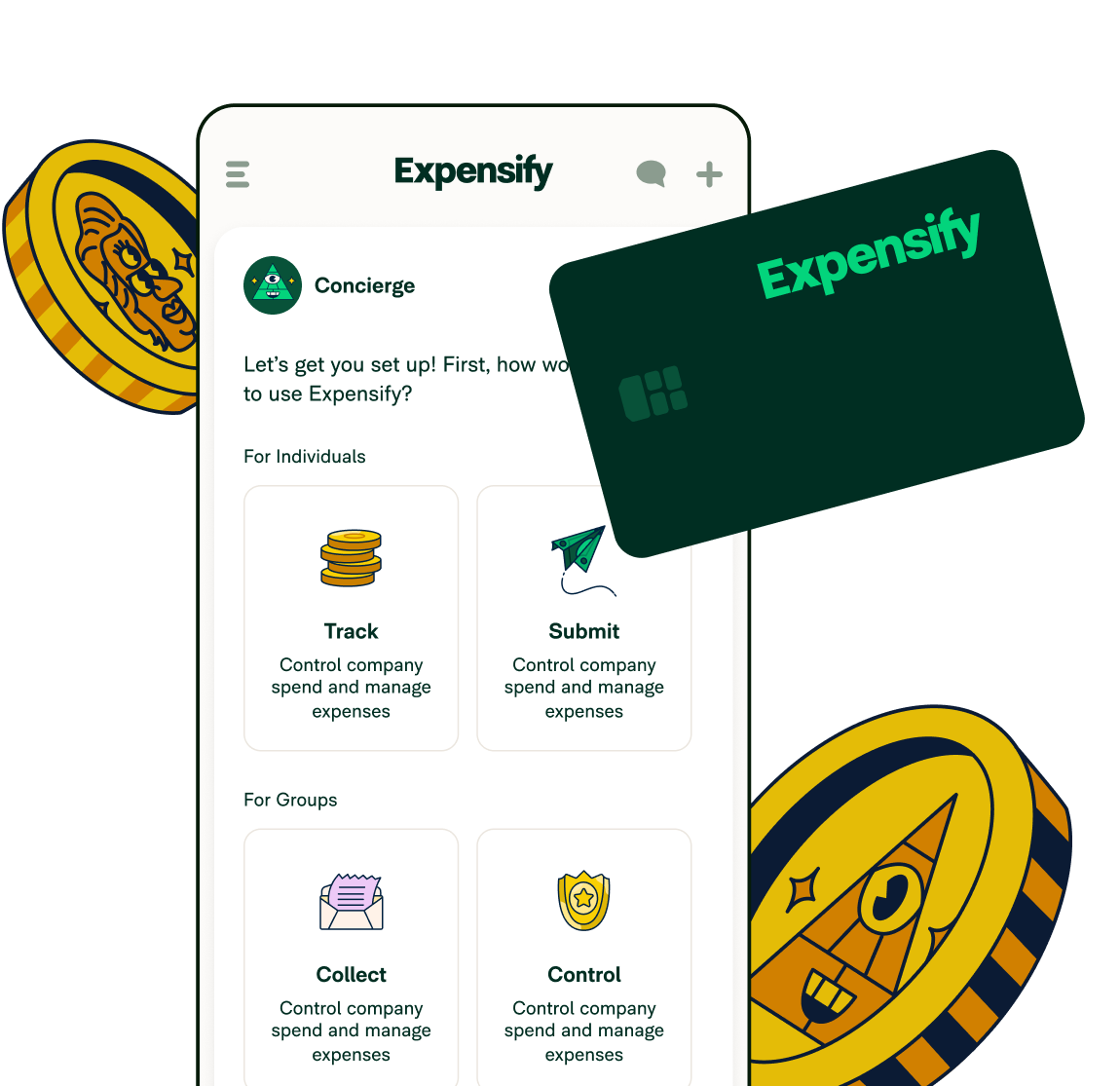Leaving money on the table? Know these self-employed tax deductions 2025

Meet Karine, a freelance consultant who just discovered she left $7,000 in tax deductions unclaimed last year. Like many self-employed professionals, she was tracking expenses manually and missing legitimate write-offs that could have significantly reduced her tax burden. This is where smart expense management becomes your secret weapon for tax season.
Self-employed tax deductions aren't just for seasoned business owners anymore. Whether you're a freelancer or a consultant, you can leverage modern expense tracking to transform how you manage tax deductions, which we’ll discuss in this guide.
From automated receipt scanning to realtime expense categorization, technology offers practical tools that revolutionize tax preparation and maximize savings. Let’s take a deeper look at tax write-off categories for the self-employed.
Turn your home into a tax advantage
Your home isn't just where you live and work—it's a potential goldmine of tax deductions many self-employed professionals overlook. Understanding how to properly document and claim these expenses can transform your living space into a powerful tax advantage. Let's explore how to maximize these tax write-offs as a self-employed person while staying compliant with IRS guidelines.
Calculating square footage vs. simplified method
Your home office is a powerful tax deduction waiting to happen. For 2025, you have two options for claiming this deduction. The standard method lets you deduct expenses based on the percentage of your home used for business. For example, if your home office takes up 10% of your house, you can deduct 10% of your total home expenses.
Don't want to track every expense? The simplified method lets you multiply your office square footage (up to 300 sq. ft.) by $5. While simpler, this might leave money on the table for larger spaces or areas with high utility costs.
Must have documentation for home office claims
The key to maximizing home office deductions is meticulous documentation. You'll need:
Floor plans or measurements showing your dedicated workspace
Photos of your home office setup
Monthly utility bills and maintenance receipts
Mortgage interest or rent payment records
Insurance costs related to your home
Quick-tracking utilities and maintenance with Expensify
Stop drowning in paper receipts and manual calculations. Modern expense management, like
Expensify, transforms how you track home office expenses for tax write-offs when you’re self-employed.
Simply snap photos of utility bills and maintenance receipts and let smart scanning technology automatically categorize them. Set up recurring expense tracking for monthly utilities and create custom categories for home office-related costs.
Transportation and meal write-offs without the headache
Every business trip, client meeting, and working lunch represents an opportunity for tax savings. Yet these deductions often go unclaimed due to poor documentation or confusion about eligibility. Let's break down how to capture every eligible travel and entertainment expense—without the usual administrative headache.
Realtime mileage tracking
Gone are the days of manually logging business miles in a notebook. Expensify's distance tracking feature automatically tracks and logs your business trips. The system:
Tracks exact mileage for each business trip using features like GPS-tracking and a Google Maps integration
Calculates deductions using current IRS rates (70¢ per mile for 2025)
Separates business and personal travel
Creates detailed reports for tax time
Client meeting travel expenses
Don't miss out on deductions for:
Airfare and train tickets
Hotel accommodations
Rideshare services and taxis
Car rentals
Conference registration fees
Parking and toll automatic receipt capture
Never lose another parking receipt. Simply snap a photo of parking and toll receipts, and let Expensify’s SmartScan technology:
Extract the merchant, date, and amount from each receipt automatically
Categorize expenses correctly
Store digital copies for tax records
Create expense reports in realtime
Business meals
Understanding the 50% deduction rule for business meals is crucial. Track:
Client meetings and business discussions
Conference meals
Team meetings and training sessions
Business travel meals
Power up your professional growth
Investing in your professional development isn't just good for business—it's a smart tax strategy. Many self-employed professionals don't realize that education and training expenses can be powerful tax deductions. Here's how to turn your learning investments into valuable tax savings.
Industry certifications and course fees
Professional education expenses are fully deductible when they:
Maintain or improve skills needed in your business
Meet legal or professional requirements
Directly relate to your current work
Keep records of:
Course registration fees
Required materials and books
Exam fees
Online learning platform subscriptions
Digital subscriptions management
Streamline your learning expense tracking with deductions like:
Professional journal subscriptions
Industry research platforms
Online course memberships
Certification renewal fees
How Expensify categorizes learning investments
Transform educational expenses into organized records with the following Expensify features:
Automatic categorization of learning expenses
Custom tags for different types of education
Realtime tracking of subscription renewals
Detailed reports for tax documentation
Health and retirement planning
Securing your future through health and retirement planning offers more than just peace of mind. It provides significant tax advantages that many self-employed professionals overlook. Let's look further into how to leverage these essential expenses for maximum tax benefit.
Self-employed health insurance premiums
Did you know? Self-employed individuals can deduct 100% of health insurance premiums for themselves, their spouse, and dependents. Track:
Monthly premium payments
Long-term care insurance premiums
Dental and vision coverage
Medicare premiums, if you're eligible
HSA contribution tracking
Health Savings Accounts offer triple tax advantages like:
Tax-deductible contributions
Tax-free growth
Tax-free withdrawals for qualified expenses
Wondering how much you can contribute on an annual basis? For 2025, you can contribute up to:
$4,150 for individual coverage
$8,300 for family coverage
An additional $1,000 if you're 55 or older
Retirement account benefits for 2025
Maximize your retirement savings with these tax-advantaged options:
SEP IRA contributions (up to 25% of net earnings)
Solo 401(k) plans ($23,000 limit for 2025)
SIMPLE IRA plans for small businesses
Traditional IRA contributions
Setting up recurring expense tracking
Never miss a health or retirement contribution when you set up recurring expense tracking:
Automate premium payment tracking
Set up recurring HSA contribution monitoring
Track retirement account contributions
Generate year-end tax reports
Business tools that pay you back
The technology and services that power your business are opportunities for substantial tax savings. From software subscriptions to professional services, understanding how to track and deduct these investments properly can transform your tax picture.
Tech equipment depreciation
From laptops to specialized software, technology investments can be deducted through:
Section 179 expensing (up to $1,220,000 in 2024)
Bonus depreciation (60% for 2024)
Regular depreciation schedules
Direct expensing for items under $2,500
Software subscriptions
Digital tools are the backbone of modern business. Track these fully deductible expenses:
Cloud storage services
Project management platforms
Accounting software
Design tools and creative suites
Communication platforms
Professional service fees
Don't overlook these valuable deductions:
Legal services
Accounting and bookkeeping
Business consulting
IT support
Website maintenance
Transform marketing expenses into tax wins
Marketing isn't just about growing your business; it's also about creating valuable tax deductions. Many self-employed professionals miss out on legitimate marketing-related write-offs simply because they don't know what qualifies. Let's explore how to turn your marketing investments into powerful tax advantages.
Website costs
Your digital presence offers multiple tax advantages:
Domain registration fees
Hosting services
Website design and development
Maintenance and updates
Security certificates and services
Digital advertising expenses
Track these fully deductible marketing investments:
Social media advertising
Search engine marketing
Email marketing platforms
Content creation tools
Analytics software
Professional branding materials
Don't miss deductible branding expenses like these:
Business cards and stationery
Professional photography
Logo design
Marketing collateral
Trade show materials
Depreciation and Section 179: Transform business investments into tax advantages
Every major business purchase represents an opportunity for significant tax savings, yet many self-employed professionals leave money on the table by not fully understanding depreciation rules. Let's break down how to turn your business investments into powerful tax advantages for 2025.
Understanding smart depreciation strategies
Think of depreciation as a way to spread the tax benefit of your business investments over time. For 2025, you have several powerful options that can transform how you deduct these expenses:
The Section 179 deduction immediately lets you write off up to $1,220,000 in qualifying equipment purchases, rather than depreciating them over several years. This means investments in computers, office furniture, vehicles, and certain software can provide immediate tax relief.
Bonus depreciation offers another advantage, allowing you to deduct 60% of qualifying asset costs in 2024. This percentage is particularly valuable for larger investments that exceed Section 179 limits.
Strategic equipment purchasing
Smart timing of your business purchases can maximize tax advantages. Consider Jessica, a graphic designer who needed new equipment. By understanding depreciation rules, she strategically purchased her workstation in December, securing valuable deductions for that tax year while setting up her business for success.
How Expensify tracks depreciable assets
Never miss a depreciation deduction with smart asset tracking:
Automatic categorization of capital expenses
Built-in depreciation schedules
Realtime asset value tracking
Custom reports for tax preparation
Charitable giving: Align business success with social impact
Strategic charitable giving isn't just good for the community; it's a smart tax strategy for self-employed professionals. Let's explore how to maximize the impact of your business's charitable contributions while optimizing tax benefits.
Business-related charitable deductions
While operating as a sole proprietor, your charitable contributions are claimed on Schedule A rather than Schedule C. However, smart documentation and strategic giving can transform your charitable intentions into valuable tax advantages:
Document fair market value of donated goods
Track volunteer-related expenses
Record charitable mileage (14¢ per mile for 2024)
Maintain records of monetary contributions
Strategic giving opportunities
Let’s look at Michael, a web developer who donated his services to a local nonprofit. While he couldn't deduct the value of his time, he properly tracked and deducted all related expenses, including mileage, supplies, and software costs used specifically for charitable work.
Using Expensify for charitable expense tracking
Transform charitable giving documentation:
Instant receipt capture for donations
Custom categories for charitable expenses
Automated mileage tracking for volunteer work
Year-end charitable contribution reports
Other game-changing deductions you might be missing
Beyond the obvious deductions, savvy self-employed professionals can find significant tax savings in often-overlooked areas. Let's explore these hidden opportunities that could transform your tax picture.
Bank and financial services
Your money management costs can add up to valuable deductions. Track these often-missed expenses:
Merchant processing fees
Business bank account charges
Payment platform commissions
Currency conversion fees for international clients
Professional services and labor
Smart delegation often comes with tax advantages. Document these deductible costs:
Contract labor payments
Freelancer fees
Professional memberships
Industry certification costs
Accessibility and improvement investments
Creating an inclusive business environment is tax-advantaged. Track expenses for:
Making your workspace accessible
Accommodating employees with disabilities
Improving facility access
Safety and compliance upgrades
Research and innovation costs
Investing in your business's future can yield immediate tax benefits. Document things such as:
Market research expenses
Product development costs
Testing and prototyping expenses
Patent and trademark applications
Expensify's role in capturing miscellaneous deductions
Transform how you track these diverse expenses when you use Expensify:
Custom categories for unique business costs
Automated receipt categorization
Realtime expense monitoring
Comprehensive tax reports
Smart expense management ensures you never miss these valuable deductions. By implementing comprehensive tracking, you can transform routine costs into valuable tax advantages.
Remember: Often-overlooked deductions can add up to significant tax savings. The key is having a system that captures and categorizes every eligible expense, whether small or uncommon.
Stay tax-ready all year: smart planning strategies
Tax preparation shouldn't be a yearly scramble. With the right systems and strategies, you can transform tax management from a stressful annual event into a smooth, continuous process. Let's discover how to create a tax management system that works year-round, turning potential chaos into strategic advantage regarding tax write-offs for the self-employed.
Quarterly tax preparation
The key to stress-free tax management is staying ahead of your obligations throughout the year. Tax season feels like a sprint to the finish line for many self-employed professionals. But what if you could turn it into a well-paced journey instead? Start by setting up a reliable system for quarterly tax payments.
Consider implementing automatic payment reminders and dedicating just one hour each month reviewing your profit and loss statements, and transform your tax management from a source of stress into a structured process. This regular monitoring allows you to adjust your tax strategy based on real business performance, rather than year-end surprises.
Year-round expense monitoring
Gone are the days of the year-end receipt scramble. Modern expense management transforms tax preparation into an organized, continuous process. Think of it as maintaining your car regularly instead of waiting for a breakdown – small, consistent actions prevent major headaches down the road.
The most successful self-employed professionals make expense tracking part of their daily routine. Each morning, take five minutes to categorize any new expenses and ensure all receipts are properly stored. This small daily investment prevents the overwhelming task of sorting through months of uncategorized expenses. With automated tools, you can set up custom categories that align with tax deductions, making year-end reporting a breeze.
Receipt organization system
A robust receipt management system is your best defense against missed deductions and audit concerns. Think of it as your digital filing cabinet, working 24/7 to keep your business tax-ready. Modern digital storage solutions do more than just store receipts – they create a searchable, secure archive of your business expenses.
How Expensify automates tax-ready reports
Modern expense management technology like Expensify takes the guesswork out of tax preparation. Instead of manually sorting through receipts and creating expense reports, smart systems automatically generate tax-ready documentation. Custom report templates align with tax categories, while realtime tracking ensures nothing falls through the cracks.
The power lies in the automation. Your expense data flows seamlessly into your tax preparation software, eliminating double-entry and reducing errors. This integration transforms tax preparation from a dreaded task into a smooth, efficient process that runs in the background while you focus on growing your business.
Expensify's role in maximizing deductions
Smart expense management technology transforms how self-employed professionals track and maximize tax deductions. Whether you're capturing receipts on-the-go or generating year-end reports, modern tools eliminate the guesswork and manual effort from tax preparation. Let's explore how these features work together to create a seamless tax management experience.
Automatic receipt scanning prevents lost deductions
Automatic receipt scanning is your personal tax assistant, working round the clock to capture and organize every business expense. When you make a purchase, simply snap a photo of the receipt with your phone. The system instantly digitizes the information, extracting key details like date, amount, and vendor. This digital record becomes part of your searchable database, ensuring no deduction goes unclaimed.
Smart categorization reduces manual work
Artificial intelligence transforms expense categorization from a tedious manual task into an automated process. The system learns from your spending patterns, automatically assigning expenses to the appropriate tax categories. This intelligent categorization ensures consistency and accuracy, while significantly reducing the time spent on expense management.
As you use the system, it becomes smarter and more efficient. Custom category mapping allows you to align expense categories with your specific business needs and tax requirements. Realtime tracking provides instant visibility into your business spending and potential tax deductions.
Realtime expense tracking versus manual end-of-year scramble
Moving from end-of-year expense management to realtime tracking is like switching from paper maps to GPS navigation. With continuous monitoring, you always know where you stand with your tax deductions. This proactive approach means your expense reports are always current and tax-ready.
Instead of spending hours reconstructing your business activities at year-end, you have instant access to organized, categorized expense data. This realtime insight not only saves time during tax season but also helps you make informed business decisions throughout the year.
Mobile accessibility for capturing expenses anywhere
Modern business happens everywhere—not just at your desk. Mobile accessibility ensures you never miss a deduction, whether you're meeting clients across town or attending a conference across the country. Cloud-based storage means your expense data syncs across all your devices, while offline functionality allows you to capture receipts even without an internet connection.
Integration with major accounting software
Seamless integration with your existing accounting tools creates a unified financial management system. Your expense data flows automatically into your accounting software, eliminating double-entry and reducing errors. This integration extends to tax preparation software as well, streamlining the entire process from expense capture to tax filing.
The result is a connected ecosystem of financial tools that saves hours of manual work while providing deeper insights into your business finances. Custom export formats ensure your data works with your preferred accounting tools, while realtime synchronization keeps everything up to date.
Remember: The key to maximizing tax deductions isn't just knowing what's available—it's having the right tools and systems in place to capture every eligible expense throughout the year. Let technology do the heavy lifting while you focus on growing your business.
Don't let another tax season catch you unprepared. With smart expense management and a clear understanding of available deductions, you can transform tax preparation from a yearly headache into a strategic advantage for your business. Start implementing these strategies today, and watch your tax savings grow.
FAQs about self-employed tax write-offs
-
Self-employed individuals can deduct legitimate business expenses including home office costs, travel expenses, professional development, health insurance premiums, retirement contributions, and business tools. The key is maintaining proper documentation and understanding IRS guidelines for each deduction.
-
Maximize your refund by:
Tracking all eligible business expenses
Using smart expense management tools
Working with a tax professional
Planning deductions throughout the year
Maintaining thorough documentation
-
Fully deductible expenses include:
Business insurance premiums
Professional development costs
Marketing expenses
Office supplies
Professional service fees
-
The Qualified Business Income (QBI) deduction allows eligible self-employed individuals to deduct up to 20% of their business income. This deduction is available through 2025 and has specific income thresholds and business type requirements.
-
Yes, self-employed individuals can deduct 100% of health insurance premiums for themselves, their spouse, and dependents. This includes medical, dental, and long-term care insurance premiums. The deduction is claimed on Form 1040, not Schedule C.







